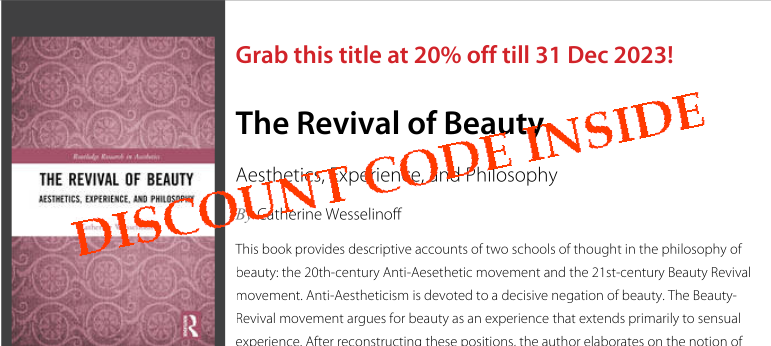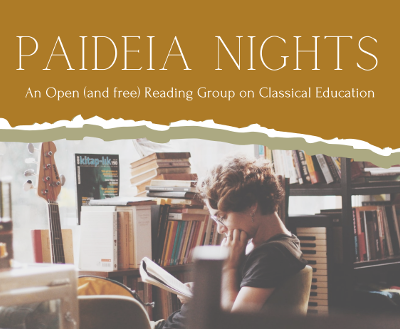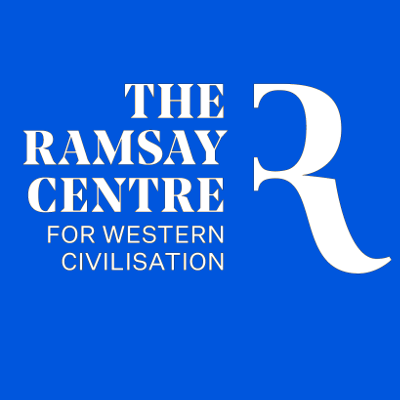Catherine Wesselinoff
“Beauty will save the world.”
The words of a madman – or of an oracle? My new book - The Revival of Beauty: Aesthetics, Experience and Philosophy - explores two duelling schools of thought: Anti-Aestheticism and Beauty Revivalism. For the former, these words are lunacy: for the later, prophecy.

It is easy to dismiss the aphorism as hopelessly idealistic, naïve, or absurd. As Aleksandr Solzhenitsyn observes in his 1970 Nobel Laureate speech:
“One day Dostoevsky threw out the enigmatic remark: ‘Beauty will save the world’. What sort of a statement is that? For a long time, I considered it mere words. How could that be possible? When in bloodthirsty history did beauty ever save anyone from anything? Ennobled, uplifted, yes—but whom has it saved?”
Dostoevsky was indisputably a genius, and perhaps he might have known what he was talking about. On the other hand, how could a thing called ‘Beauty’ bring about the salvation of ‘the world’: especially when it seems to need saving itself, from recent artistic and critical attempts to destroy it?
During the course of the 20th century, under the influence of Anti-Aestheticism, beauty came to be understood as representing objectionable ideological frameworks. Beauty was seen as a distraction from justice, a weapon of evil, an instrument of oppression and a material commodity. It was said to arouse gratuitous and compensatory pleasures, which sublimate vital energies that should be directed towards social and political justice. Beauty was associated with Fascistic politics, and linked to pornography, sadism, discrimination, madness, futility, impotence, and death.
The Revival of Beauty is a response to such Anti-Aesthetic attitudes. In the book, I argue that all these critiques share a common misconception of beauty as a “merely sensuous” pleasure. Anti-Aesthetic thinkers reduce our notion of beauty to a narrow, purely aesthetic term. But, I argue, beauty transcends aesthetics; it evokes aspirations for what is good and true.
Inspired by “Beauty-Revivalist” texts such as On Beauty and Being Just (2000) by Elaine Scarry, professor of aesthetics at Harvard University; Only a Promise of Happiness (2007) by Alexander Nehamas, professor of philosophy at Princeton University; and Beauty (2009) by Sir Roger Scruton who was, until his death in 2020, a senior research fellow at Blackfriars Hall, University of Oxford, I offer a fully developed resuscitation philosophical notions of beauty, arguing that it is linked - necessarily - to our apprehension of the highest human values.
In another vein, Pope Benedict XVI in his address “Meeting with Artists,” sees both the darkness resulting from the modern eclipse of beauty, and true beauty’s capacity to lead us back to sight and meaning:
“Too often, though, the beauty that is thrust upon us is illusory and deceitful, superficial and blinding, leaving the onlooker dazed; instead of bringing him out of himself and opening him up to horizons of true freedom as it draws him aloft, it imprisons him within himself and further enslaves him, depriving him of hope and joy… Authentic beauty, however, unlocks the yearning of the human heart, the profound desire to know, to love, to go towards the Other, to reach for the Beyond. If we acknowledge that beauty touches us intimately, that it wounds us, that it opens our eyes, then we rediscover the joy of seeing, of being able to grasp the profound meaning of our existence.”
I argue that beauty is essential to life as we would want to live it. When we are speaking about beautiful things - a painting, a flower, a child’s face – such attributes of their beauty as symmetry, colour or unity may analogise parallel attributes in the realm of justice, for example, which are just as important but much harder to conceptualise or cultivate. Similarly, our experiences of beauty can restore our sense of the sacred: or increase our happiness. In one way or another, beauty, reveals to us, perhaps even dictates, which higher values we recognise, appreciate and treasure; and if we are lucky and attentive, guides us to live accordingly.
But what does this mean for the liberal arts’ own renewal, in Australia and around the world?
In April 2023, a report in The New Yorker claimed that the ‘classical education’ movement has been developed “to restore a liberal-arts curriculum designed to cultivate wisdom and teach children to pursue the ancient ideals of truth, beauty, and goodness.”
In other words, the revival of beauty is central to the liberal arts mission. I believe we must recover our sense of the transcendent value of beauty as part of our mission to cultivate students as truly flourishing human beings. This recovery must lie at the heart of the classical education renewal. The attraction to beauty can draw us into communion with the true and the good, thereby cultivating both our intellectual and our ethical capacities.
Aleksandr Solzhenitsyn concludes his speech with the following remarks:
“Perhaps that ancient trinity of Truth, Goodness and Beauty is not simply an empty, faded formula as we thought in the days of our self-confident, materialistic youth? If the tops of these three trees converge, as the scholars maintained, but the too blatant, too direct stems of Truth and Goodness are crushed, cut down, not allowed through—then perhaps the fantastic, unpredictable, unexpected stems of Beauty will push through and soar to that very same place, and in so doing will fulfil the work of all three.”
Perhaps Dostoevsky wasn’t just a madman after all. The Anti-Aesthetic movement was incredibly influential in its often ideological, even brutal, condemnation of aesthetic thinking as confused and “bourgeois”. In this book, I present an unapologetic attempt to revive, revitalise and rehabilitate our experience of the beautiful: to restore to our aesthetic judgments their proper moral, spiritual and intellectual status.






